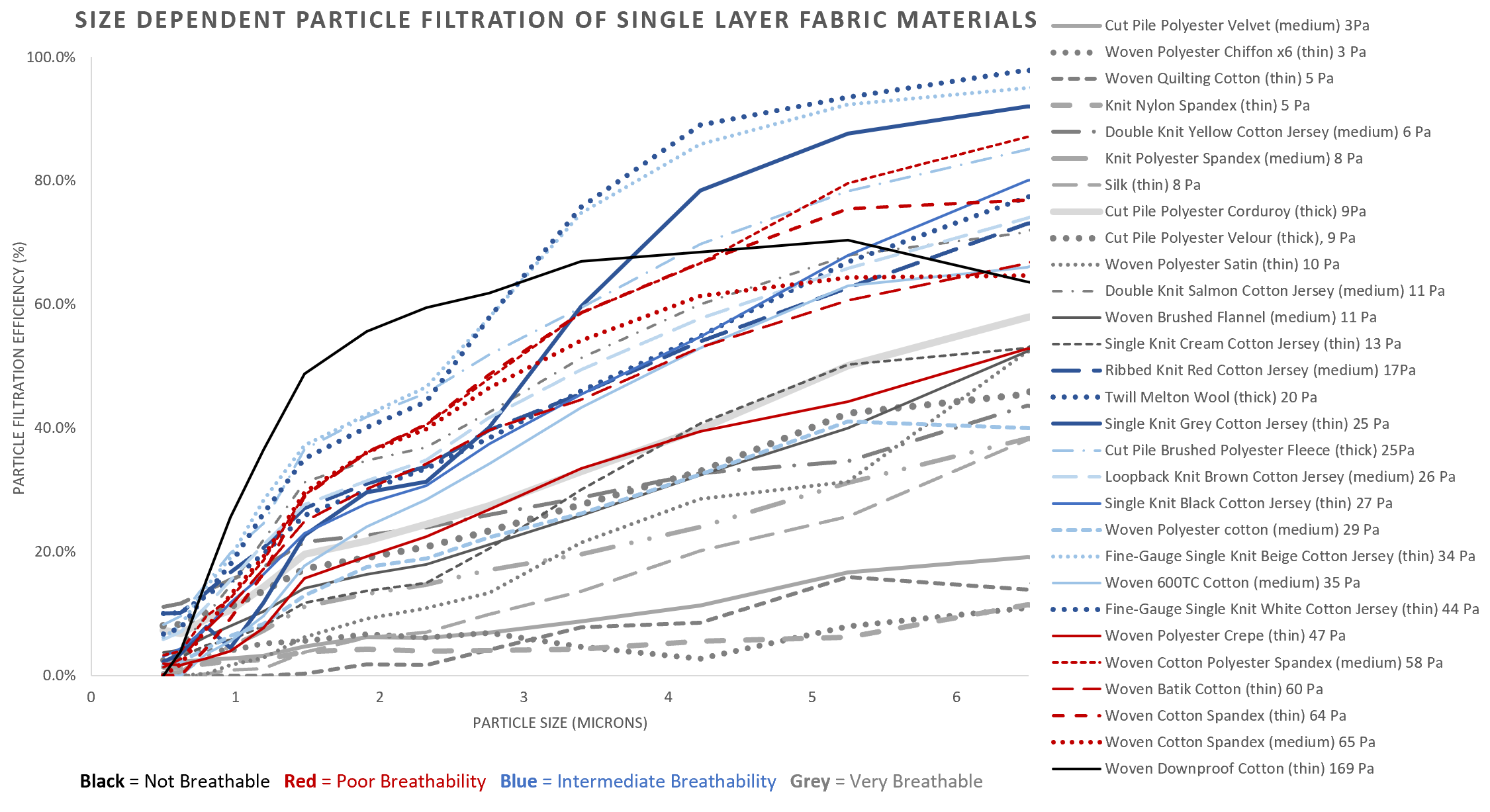
To study the effect of fabric type (cotton, polyester, silk, wool, spandex etc), construction (knitted, woven, cut pile, brushed) and density (lightweight, medium, dense) on filtration performance and breathability (inverse of pressure drop, Pa), we collaborated with the UBC Aerosol Lab to test a number of common fabric materials. The graph above is organized in terms of breathability (inverse of Pa): the most breathable fabrics (in grey) have the smallest pressure drop (Pa). Red and Black fabrics have poor breathability: 1 layer of the fabric already have the same breathing resistance or higher compared to a NIOSH standard N95 mask. Thin, medium and thick (in the legend) denotes fabric thickness and not density.
Although cotton fabrics with higher thread count such as batik cotton, TC600 bedding, downproof ticking have better filtration performance compared to quilting cotton (TC 40-80), the increase in breathing resistance make these higher thread count fabrics impractical. A tightly fitted mask with the poorly breathable material will be difficult for most people to tolerate. A loosely fitted mask with the poorly breathable material will generate more leak around the edges due to the large differential air resistance, to further reduce filtration performance.
It is difficult to conduct studies on fabric materials because of the large variations that exist in fabric type, construction and density. For the general public shopping at the fabric store, it would be difficult to determine the exact fabric specifications, which is part of the problem! Therefore, interpretation of our data should focus on general trends and not specific fabric materials.
For the analytical mind, aerosol researcher Timothy Sipkens has created an interactive tool to help visualize the data from the UBC Aerosol Lab.
The 2-Layer Fabric Mask
What is the best material (in terms of breathability and filtration) for a 2-layered fabric mask?
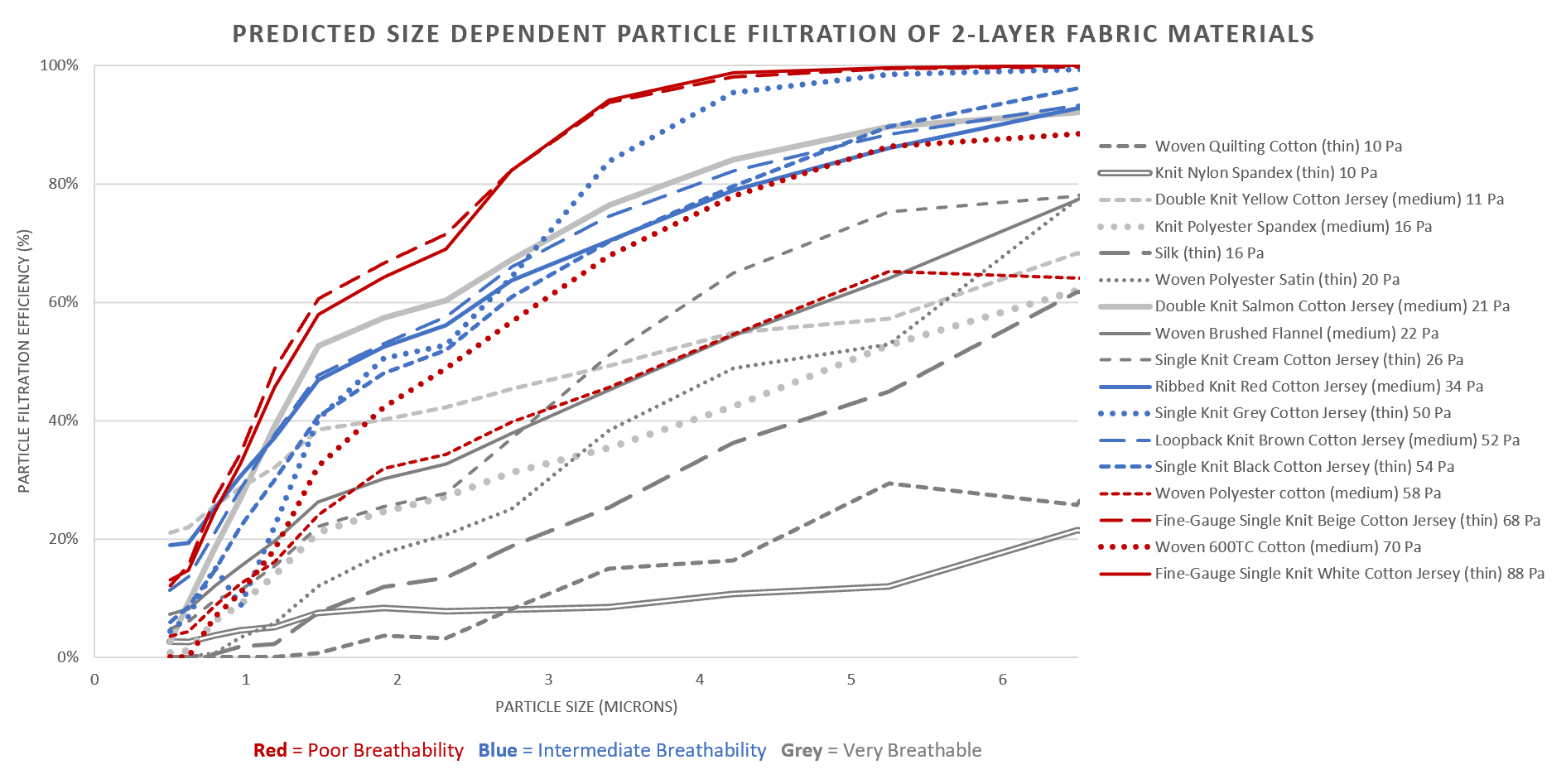
Using single-layer filtration (particle filtration efficiency of NaCl aerosols with aerodynamic sizes of 0.5-6microns) and breathability (Pressure drop, Pa) data, measured at a flow rate of 30L/min (equivalent to normal-moderate work of breathing), we estimated the filtration performance and breathability for the 2-layer fabric mask. All pressure drop (Pa) in the legend are reported for 2-layers of the fabric material. Red denotes poorly breathable material that have higher air resistance than the NIOSH standard N95 mask. Blue denotes breathable material that have air resistance between the surgical mask and the N95 mask. Grey denotes very breathable material that have air resistance less than a surgical mask.
The elderly or those with respiratory problems (eg. asthma, COPD) should consider using fabric mask materials that are very breathable in combination with a breathable filter such as 2 dried baby wipes (Huggies Simply Clean) or Bounty 2-ply paper towel. Good filters will improve filtration performance without significantly increasing the breathing resistance.
Fabrics with cut pile or brushed construction such as velvet, corduroy, velour, fleece, flannel and wool act as better filters compared to simple knit and woven fabrics. However, perhaps for the same reasons, their propensity to attract dust and dirt make them poor choices for the outermost layer of the fabric mask. Therefore, we excluded these materials from the graph of filtration performance of 2-layer fabric materials.
The 3-Layer Fabric Mask
Is it possible to make a homemade reusable mask that performs as well as a commercial non-surgical mask, completely using fabric material?
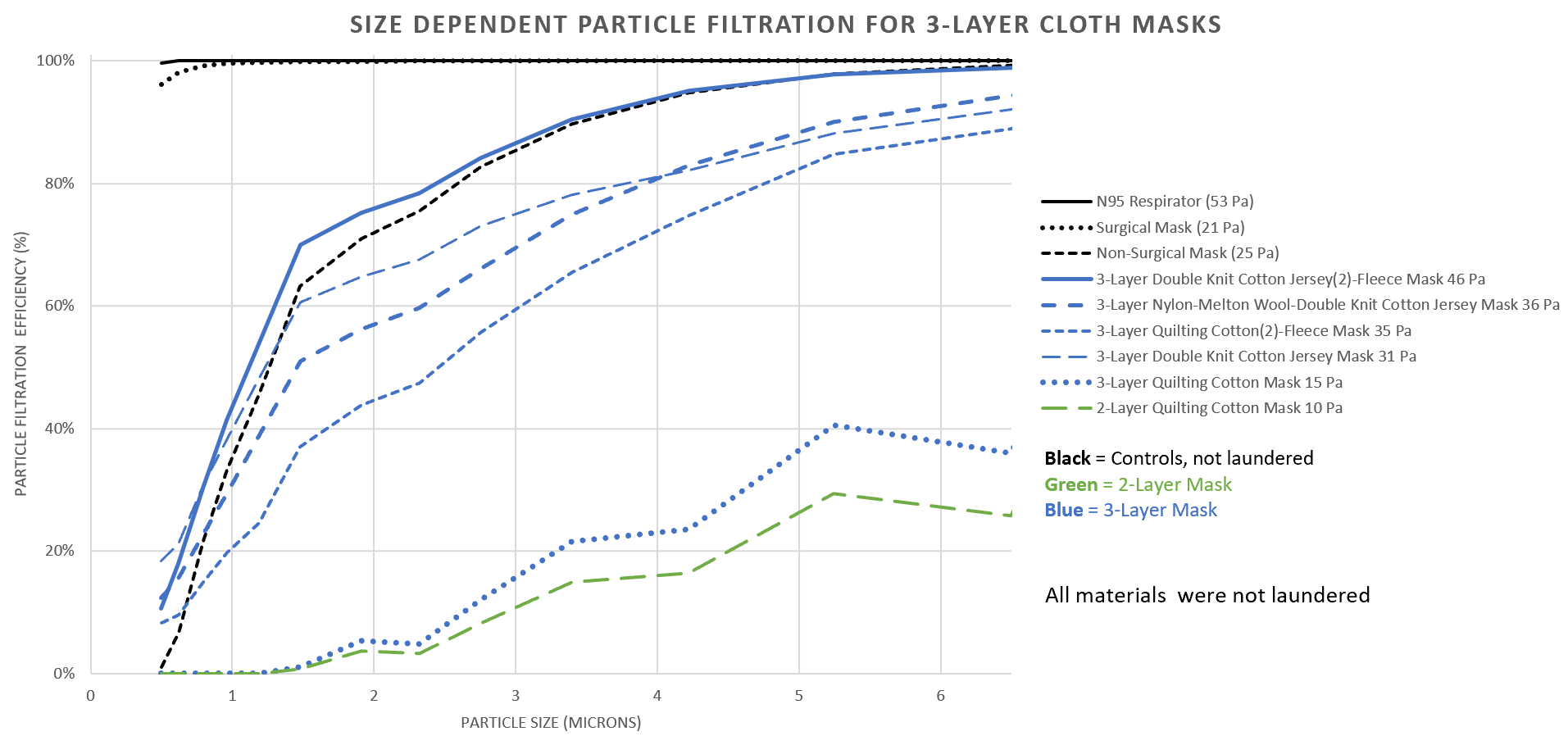
To answer this question, we used single-layer filtration (particle filtration efficiency of NaCl aerosols with aerodynamic sizes of 0.5-6microns) and breathability (Pressure drop, Pa) data, measured at a flow rate of 30L/min (equivalent to normal-moderate work of breathing), to estimate the filtration performance and breathability for different combinations of 3-layer fabric masks before and after laundering. We mainly included fabrics that had high intrinsic filtering quality (high filtration and breathability). The pressure drop (Pa) in the legend are reported for each of the 3-layer fabric masks - all the masks included have very good or good breathability (better than that of a N95 mask).
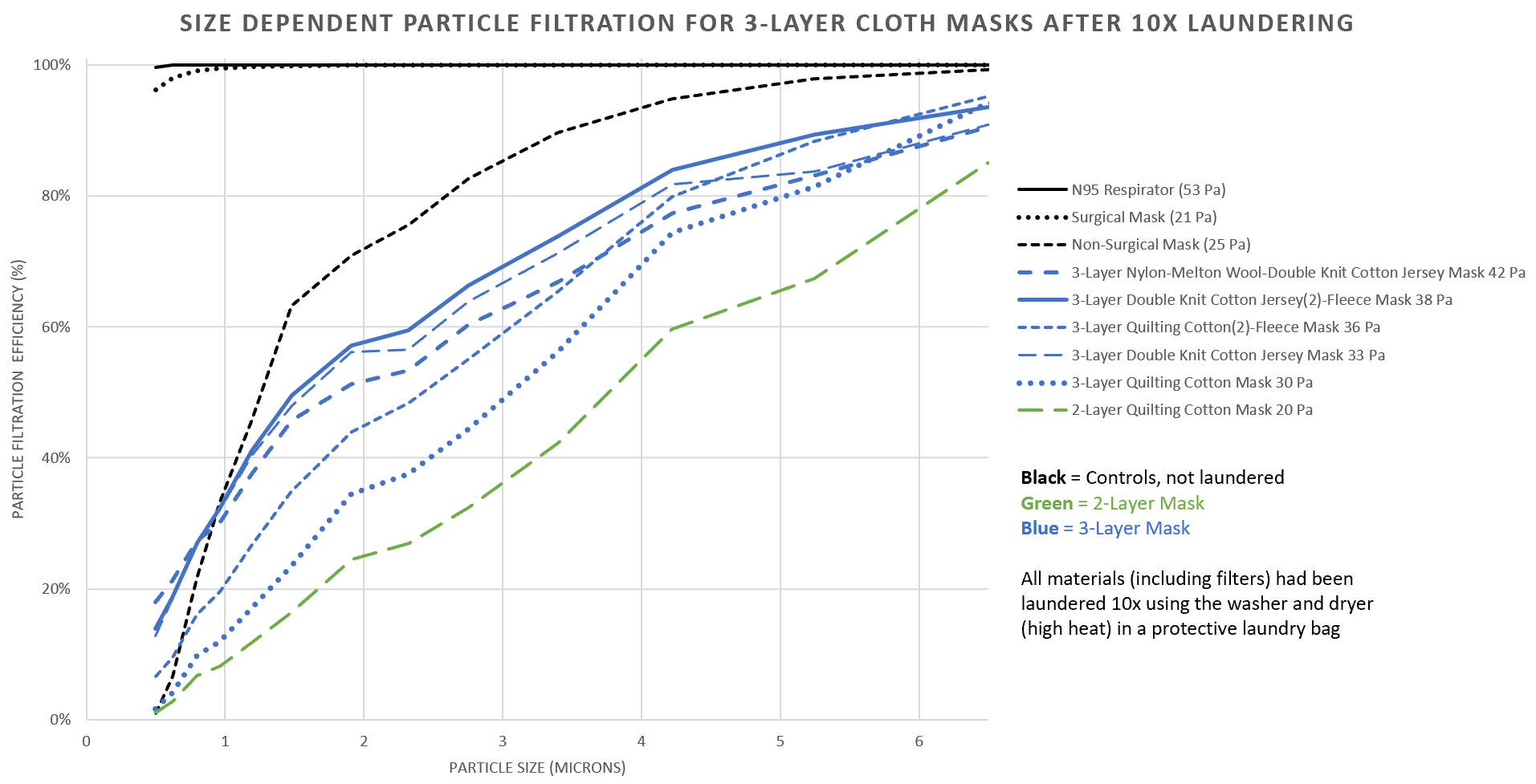
- All of the 3-layer masks performed better than the 2-layer quilting cotton mask.
- None of the fabric masks (after laundering) performed better than a commercial non-surgical mask.
- The best performing 3-layer fabric mask combinations:
- 2 layers of double knit cotton with 1 layer of fleece
- 3 layers of double knit cotton
The 3-Layer Fabric Mask with Filter
Is it possible to make a homemade reusable mask that performs as well as a commercial non-surgical mask, with the use of a cheap, accessible and reusable filter?
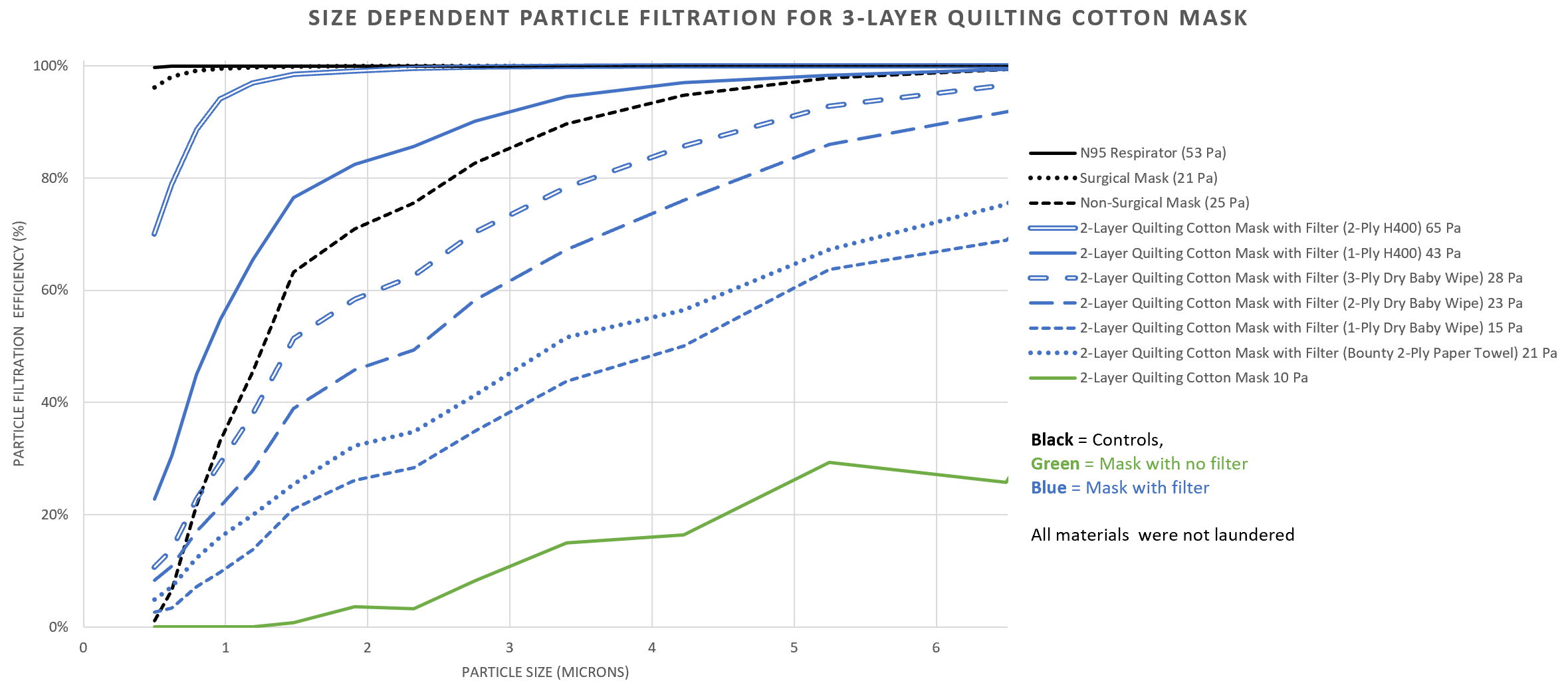
To answer this question, we used single-layer filtration (particle filtration efficiency of NaCl aerosols with aerodynamic sizes of 0.5-6microns) and breathability (Pressure drop, Pa) data, measured at a flow rate of 30L/min (equivalent to normal-moderate work of breathing), to estimate the filtration performance and breathability for the 2-layer quilting cotton fabric mask with different combinations of filters, before and after laundering. The pressure drop (Pa) in the legend are reported for each of the 3-layer masks. All the masks included have very good or good breathability (better than a NIOSH standard N95 mask), except for the cotton mask with 2-ply H400 filter, which has poor breathability.
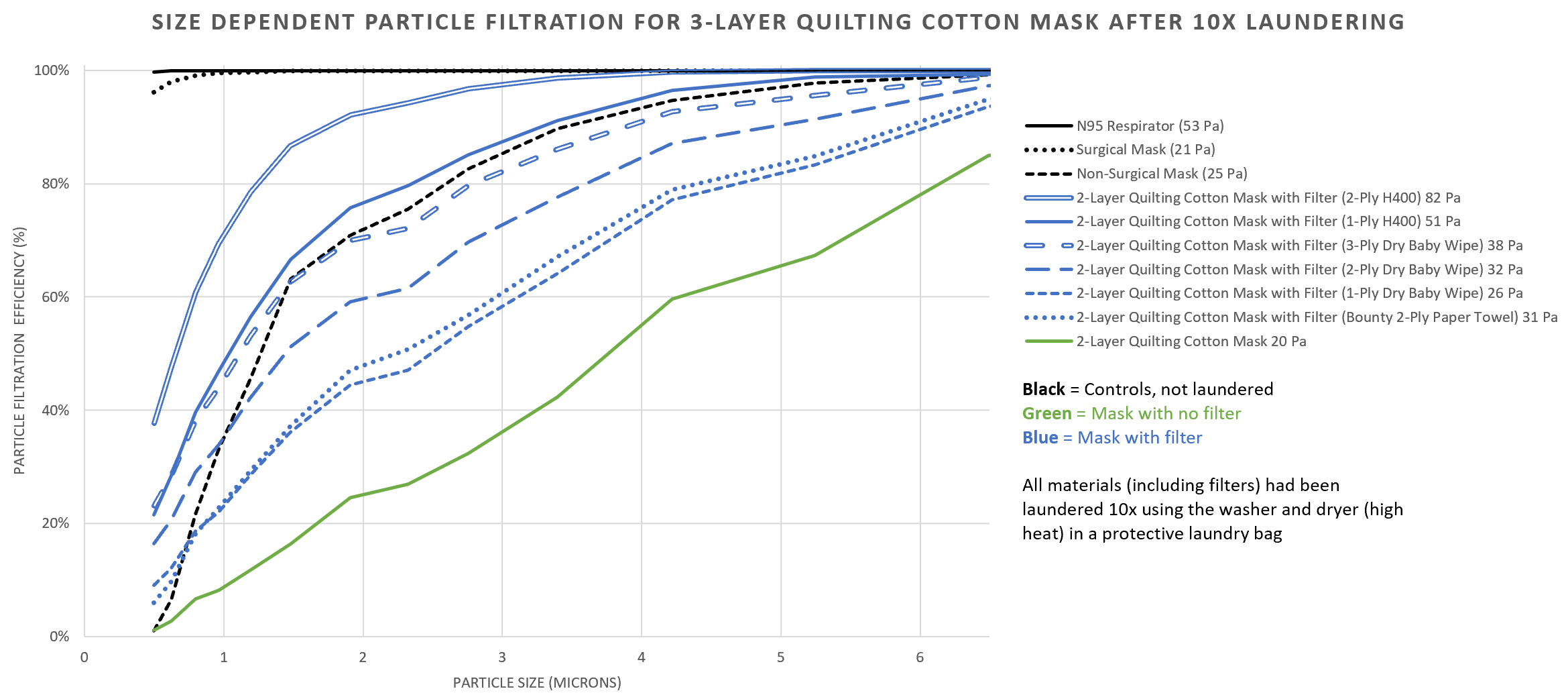
A few mask combinations performed as well as the commercial non-surgical mask, even after laundering both the filter and the fabric 10 times in the washer and dryer in high heat:
- 2-layer quilting cotton mask with 1-ply H400 Halyard sterilization wrapping
- 2-layer quilting cotton mask with 3-ply Huggies Simply Clean dried baby wipe
Take Home Points:
- Densely woven or knit material will have higher filtration performance but may not be breathable. If the fabric is not breathable, not only will it be uncomfortable but there will be more leak around the edges of the mask to further reduce the filtration performance!
- The most breathable fabrics in order of best to worst filtration performance after laundering:
- Double knit cotton jersey
- Single knit cotton jersey
- Knit polyester spandex
- Quilting cotton
- Silk
- polyester satin
- knit nylon spandex
- A 3-layer homemade fabric mask (all made of fabric) is not as protective as a commercial non-surgical mask. A filter is necessary to achieve this without compromising breathability.
- A 3-layer homemade fabric mask (2-layer fabric with filter) is as protective as a commercial non-surgical mask.